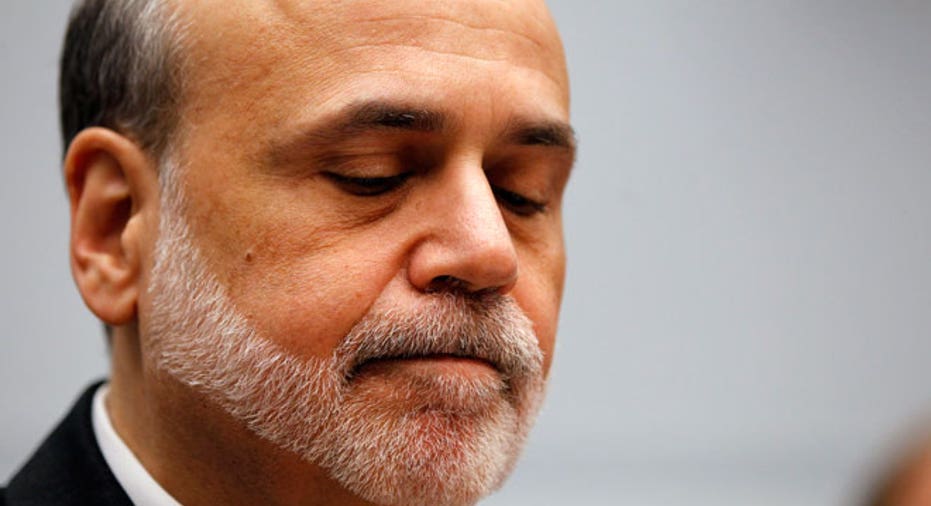Markets Flummoxed By Fed's Mixed Messages

Saying stock markets are reacting to clues provided by Federal Reserve Chairman Ben Bernanke and the Fed is sort of ridiculous -- because neither has given any clear direction which way the Fed is headed.
Sure, eventually the Fed will have to wind down its $85-billion-a-month bond buying program known as quantitative easing. But neither Bernanke nor any of his colleagues on the monetary policy-setting Federal Open Market Committee (FOMC) has given any real indication of when or how that will happen.
This is a fact, despite the almost-maniacal parsing of Bernanke’s words as well as the notes contained in the minutes of the Fed’s monthly meeting which were released Wednesday afternoon.
Indeed, in both Bernanke’s public statements and within virtually every Fed document related to the Fed’s most recent bond buying program, known as QE III because it is the third such program initiated since the fiscal crisis of 2008, it is plainly noted that the Fed will either scale back OR ADD to its purchases, depending on the trajectory of forthcoming economic data.
Given the whipsaw motion of the data so far in 2013, anyone who pretends they know which direction that data is headed is either a fool, a liar or both.
Consider Bernanke’s testimony before Congress on Wednesday. It was pure Bernanke. In his opening remarks he defended QE III and seemingly made a strong case for maintaining the program indefinitely, or at least until the U.S. economic engine is revving at full speed again.
“A premature tightening of monetary policy could lead interest rates to rise temporarily but would also carry a substantial risk of slowing or ending the economic recovery and causing inflation to fall further,” the Fed chief read from a prepared statement.
Later, during a question and answer session, he was asked by Congressman Kevin Brady (R-Texas) when specifically the Fed might begin to taper off its bond purchases and how that tapering off might play out.
Bernanke surprised many by answering that the Fed would consider scaling back QE III in the next couple of months. “If we see continued improvement and we have confidence that that is going to be sustained, then we could in -- in the next few meetings -- we could take a step down in our pace of purchases,” he responded.
Nervous Markets Overreacted
The Dow Jones Industrial average, taking its cue apparently from that response, shed 100 points in the next hour or so. Lost in the seeming directness of that comment was the second half of Bernanke’s response – that the Fed might also add to its bond purchases if forthcoming economic data reveals ongoing sluggishness.
Nervous markets, apparently not very confident with the stability of the record highs achieved in recent weeks, chose to focus on the potential for scaling back rather than adding.
This emotional (bordering on irrational) response heightened later in the day with the release of the Fed’s minutes from its April 30-June 1 meeting. In reality, the minutes were a mishmash of opinions on when and how the Fed should eventually scale back QEIII, an action everyone knows has to happen at some point.
Some “participants,” i.e. members of the FOMC, felt the Fed was ready to start paring its bond purchases as early as the upcoming June meeting.
Meanwhile, “many” others preferred a cautious approach. “But many of these participants indicated that continued progress, more confidence in the outlook, or diminished downside risks would be required before slowing the pace of purchases would become appropriate,” according to the minutes.
That group undoubtedly includes Bernanke and his likely successor as Fed chief, Vice-Chair Janet Yellen, as well as a majority of the FOMC.
Yet once again investors chose to focus on the minority view that called for scaling back QE III, pushing the Dow down 80 points by the end of the session.
Thursday’s flat market is a much better reflection of the information provided yesterday by Bernanke and the Fed.
Barely even mentioned yesterday amid the cacophony over when the Fed might start tightening monetary policy was the looming debate over how that should happen. Once again, Bernanke and the Fed minutes provided little clear guidance.
Bernanke insisted during his Congressional testimony that not only would the scaling back likely be gradual, it could also be reversed if the economic data indicated that was necessary. The Fed minutes were equally flexible on the issue, suggesting only that the tightening would not occur all at once.
Beyond that it’s anyone’s guess.



















